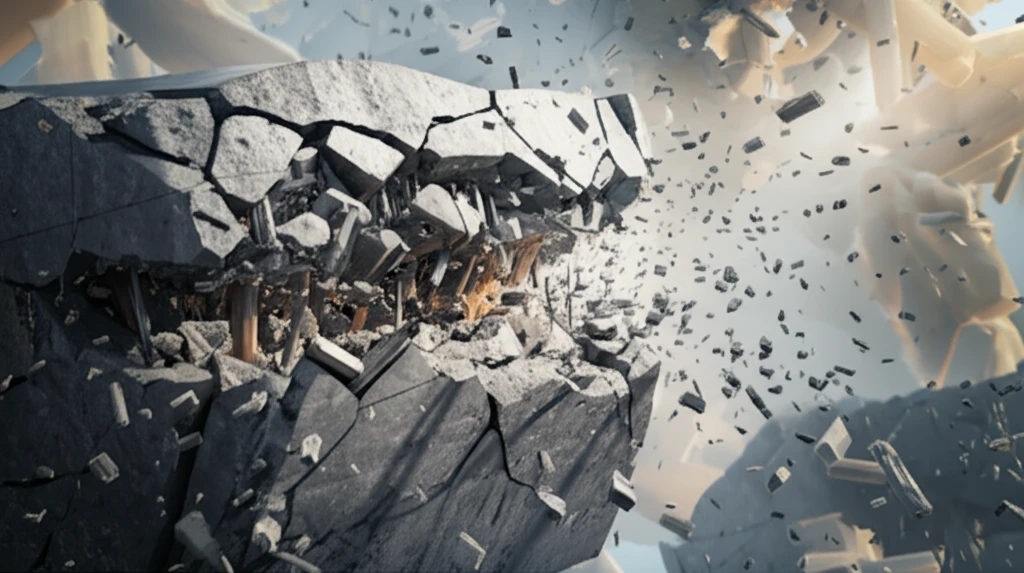
Is Your Concrete Crumbling? Unveiling the Secrets to Sulfate Resistance
"Discover how initial damage and environmental factors impact concrete durability and what you can do to protect your structures."
Concrete, the backbone of modern infrastructure, faces a relentless adversary: sulfate attack. This insidious process gradually weakens and degrades concrete structures, leading to costly repairs and potential safety hazards. While sulfate attack is a well-known threat, the complexities of its interaction with pre-existing damage in concrete have remained less understood.
Imagine concrete already bearing the scars of initial damage – perhaps from the stresses of its early hardening or exposure to harsh conditions. Now, introduce the aggressive forces of sulfate ions, penetrating through cracks and reacting with the concrete's core components. This is the reality faced by numerous structures, particularly in regions with aggressive environmental conditions.
Recent research published in the 'Journal of Sustainable Cement-Based Materials' sheds light on this critical intersection. The study meticulously examines how initial damage, combined with cycles of drying and wetting, accelerates sulfate attack in concrete. The findings offer invaluable insights for engineers, construction professionals, and anyone invested in the longevity and resilience of our infrastructure.
Decoding Sulfate Attack: What's Really Happening to Your Concrete?

Sulfate attack occurs when sulfate ions, typically found in soil and groundwater, infiltrate concrete. These ions react with hydrated compounds in the cement paste, primarily calcium hydroxide and calcium aluminate hydrates. This reaction leads to the formation of expansive products like ettringite and gypsum. As these products accumulate within the concrete's pore structure, they exert internal pressure, causing cracking, spalling, and ultimately, structural failure.
- Damage Amplifies Degradation: Concrete with initial damage exhibited a much greater mass change and reduction in Erd compared to undamaged concrete, indicating accelerated deterioration.
- Slag's Double-Edged Sword: The study found that a high content of slag, a byproduct of steel manufacturing often used as a cement replacement, can either increase or decrease sulfate resistance depending on its content level. Concrete with higher slag content showed more resistance to sulfate attacks.
- Pore Structure is Key: As exposure time increased, the porosity and number of large pores in damaged concrete also increased, creating more space for expansive sulfate reaction products to accumulate.
- Corrosion Culprits: Internal corrosion products varied depending on the water-to-cement ratio. High water-to-cement ratios primarily led to gypsum formation, while low ratios favored ettringite.
Protecting Our Infrastructure: A Call to Action
The study underscores the importance of proactive measures to mitigate sulfate attack, especially in environments where concrete structures are susceptible to initial damage. Strategies include using sulfate-resistant cements, optimizing concrete mix designs (including careful consideration of slag content), and applying protective coatings to prevent sulfate ingress. Regular inspection and maintenance programs are also crucial for early detection and repair of damage, minimizing the long-term impact of sulfate attack and ensuring the safety and sustainability of our infrastructure.
